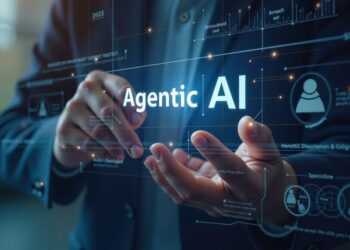
With the increasing environmental challenges worldwide, natural resource management in a sustainable manner is the need of the hour. From forests to water, oceans to minerals—these coveted resources are coming under increasing pressure. Fortunately, Artificial Intelligence (AI) is turning out to be a game-changer, presenting out-of-the-box solutions that not only utilize maximum resources available but also ensure the protection of the environment for future generations. In this article, we detail step by step how AI is revolutionizing natural resource management and why it has never been more critical.
AI’s Role in Data Collection and Monitoring
First of all, real-time monitoring is one of the largest issues in natural resource management, in that manual processes are slow, and incorrect. But AI—coupled with sensors, satellite imaging, and drones—allows one to collect extremely accurate data on an unimaginable scale previously.
Examples:
- Forest Monitoring: AI identifies illegal logging by scanning satellite data and sending real-time alerts.
- Water Management: AI-powered smart sensors monitor water consumption, leakages, and pollution in real time.
- Wildlife Conservation: Machine learning software determines animal migratory routes to end poaching and reduce biodiversity.
Conservationists and policymakers, therefore, make decisions earlier based on better information.
AI-based Predictive Analysis and Resource Forecasting
Other than the above, predictive analysis is preferably carried out by AI so that governments and businesses can anticipate availability of resources and environmental hazards. Machine learning software studies past records in a bid to forecast:
- Floods and droughts,
- Crop production,
- Fish population trends,
- Mineral depletion patterns.
This predictive element allows planning and prevention of over-tapping of resources.
Agricultural Efficiency
Another area that has been significantly affected by AI is precision farming. AI-powered platforms allow farmers to monitor soil health, weather, and pest-borne diseases through point location data. They can conserve water, reduce chemicals, and boost yields—without harming the environment as much.
Apart from this, autonomous vehicles and AI-controlled irrigation reduced manpower and power usage.

Sustainable Energy Management and Mining
Heavy industry-dominated sectors such as energy and mining also have a large role for artificial intelligence to play. AI can be programmed to:
- Intelligently automate,
- Continuously monitor and in real time,
- Optimize drilling location to the fullest,
Monitoring of emissions and devastation of the environment, - Optimization of workplace safety,
Optimize level of extraction in order to waste as little as possible.
In the same way, in renewable energy, AI enables supply and demand forecasting, smart grid management, and forecasting of solar and wind farm energy generation.
Challenges and Ethical Issues
Yet, as great as its potential excepting, natural resource management use by AI is, it is attended by challenges. Some of them include:
Challenges involving:
- Data privacy and sovereignty,
- Bias by algorithms,
- Unequal access to technology
Needs to be met in seeking to provide ethical and fair deployment. Transparency, regulation, and cooperation among stakeholders are thus needed to provide long-term success.
In a nutshell, AI delivers effective solutions to the natural resource management challenges. With real-time monitoring, predictive modeling, and automation, industries and governments become sustainable and efficient. And with our desire for a cleaner world, the combination of AI and environmental sustainability will be the passport to the protection of our world’s most valuable assets.









